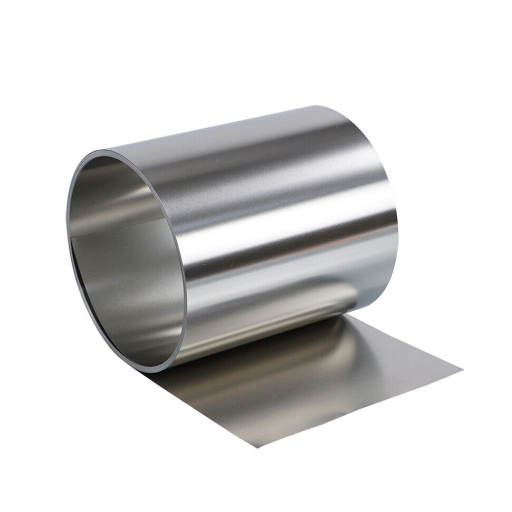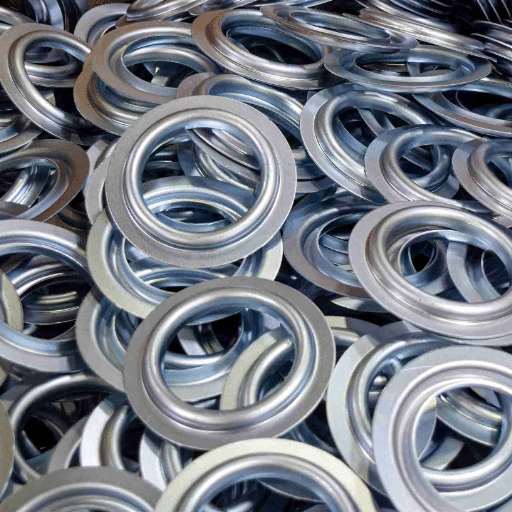For those with delicate skin, finding the right style of jewelry can affect comfort and skin health. This article will attempt to find out if stainless steel jewelry is safe for people who have metal allergy problems or skin irritation issues. First, we will look at what causes metal allergy and focus on the principal components such as nickel that cause trouble. Further, we will consider the makeup of stainless steel and discuss why its low allergenic potential along with other factors makes it better than other metals. By the end of this article, you will understand the relation of stainless steel jewelry to sensitive skin and will be able to make appropriate choices when selecting jewelry materials.
What Causes Metal Allergies and Skin Irritation?

An extreme sensitivity to metals and metal dermatitis is attributed to the hypersensitivity reaction of the immune system towards certain metal ions. Metals such as nickel, cobalt and chromium can oxidize and release ions capable of penetrating the skin due to prolonged contact with soft tissues. For those who have an allergy to metals, the immune system erroneously perceives these ions as lethal pollutants and mounts an allergic response which manifests as contact dermatitis. Redness, itching, swelling and rashes are some of the symptoms observed to occur on the affected area due to ‘contact’. Nickel is counted among the commonest of contact allergens, present in cheap jewelry, belts and watchbands. Along with that, enduring exposure to moisture, including perspiration, can worsen the shedding of metal ions, which may worsen inflammation.
Common Metal Allergens: Nickel and Other Irritants
So as to manage the allergic reactions due to exposure to metals like nickel for the first time, an attempt in identifying and eliminating the exposure to such materials has to be initiated. It is advised that those who are sensitive to nickel should avoid using jewelry and other accessories containing nickel and salt cloths instead. Clear nail polish or barrier creams can be applied as protective coatings to shield the face from the metal.
Also, understanding composition clues is vital – the label “hypoallergenic” or “nickel-free” invites optimism, but caution is warranted as even minute amounts could still be present. A consult with a dermatologist is recommended to manage prolonged reactions, who may suggest topical allies like corticosteroids or antihistamines to relieve reactions. Those with such allergic sensitivity, when irritation is signaled and minimized exposure is maintained, most should rely on these methods to manage the situation effectively.
How to Identify an Allergic Reaction to Metal Jewelry
Jewelry made out of metal like nickel for example, can trigger allergic reactions and contact dermatitis. Main attributes include redness, itching, swelling and rashes where the jewelry touches the skin. The region may also suffer from some dry flaky skin or small blister which could later on ooze or become crusty. These symptoms often appear in the 12 and 48-hour time frame after coming into contact with these substances. If the symptoms persist or steadily worsen, undergoing a professional evaluation is required. In most cases, identifying possible allergens is tracking the symptoms in relation to the jewelry or using specific patch tests in the care of an allergist.
Why People with Sensitive Skin React to Certain Metals
An allergic condition is the primary cause of metal sensitivity, especially with nickel, cobalt, and chromium. When metals touch the skin directly, there is the possibility of the ions leaching out and diffusing into deeper layers of the skin, riding the stratum corneum. For those who are sensitive, the leaky immune system will be triggered which causes sensitivity and irritation. In ordinary life, for example, nickel is often encountered due to the jewelry, belts, or watches made of it which are commonplace. Increasing the frequency of exposure is also a risk factor because the prolonged duration of contact with sensitizing agents can lead to an activation of the immune system over time. Additionally, the acidic nature of sweat will further increase the rate of metal ion constituents being released, leading to severe skin irritation. The identification and avoidance of particular metals found in personal products is indeed a foremost preventive measure to mitigate symptoms.
Is Stainless Steel Truly Hypoallergenic?

Although marketed as hypoallergenic, the claim does not hold water without scrutiny on the composition of stainless steel. 316L surgical grade stainless steel contains low quantity of nickel which is generally accepted by many. However, other grades of stainless steel might contain higher quantity of nickel which might be harmful to allergy sufferers. It requires further investigation on what grade of stainless steel to determine metal allergies of sensitive persons.
The Composition of Stainless Steel Alloy
The constituents of stainless steel alloys include mostly iron, chromium, nickel, and other elements in form of trace like molybdenum, manganese, and silicon. Chromium makes up an important part with an oxide of it at least needing to form with 10.5% of chromium, and without nickel, corrosion resistence along with mechanical properties would be drastically reduced so they are added in most austenitic stainless steels like, 304 and 316 grades. In alloys like 316L, Molybdenum is added to enhance the resistance to pitting and crevice corrosion especially in chloride rich areas. The dependent composition alongside percentages of the elements defines the grade and industrial use of the stainless steel, sensitivity of the individual, and the guidelines of averting use for those who are sensitive.
316L Stainless Steel: The Most Hypoallergenic Type
316L stainless steel is considered one of the most hypoallergenic materials available due to containing low amounts of nickel and having high resistance to corrosion. It is made with lower carbon content which improves its performance in more extreme situations, as well as reducing the risk of ionized metals that might cause allergic responses to leach out. During extended contact, 316L stainless steel releases nickel within safe limits, making it more appropriate than other stainless steels for those sensitive to nickel. This property, alongside the material’s biocompatibility makes stainless steel 316L suitable for use in medical implants, jewelry, and body piercings. Its resistance to degrading in saline and chloride environments also makes the material reliable for cosmetic and functional applications, providing safety and durability over time.
Does Stainless Steel Contain Nickel?
Indeed, stainless steel does incorporate nickel in its alloys. Manganese is a major factor in several grades of manganese steel particularly in chrome-nickel alloys of 304 and 316 as it increases ductility and strength alongside corrosion resistance. This, however, is alloy dependent. For example, 304 stainless steel will have 8-10.5% nickel while ferritic stainless steels will have little to none. This explains the grade 430 being suitable for reduced nickel applications.
How Does Stainless Steel Jewelry Compare to Other Hypoallergenic Metals?

Compared to titanium, gold, and platinum, stainless steel jewelry has a more compelling mix of affordability, hypodermic properties, and long-lasting durability. Though titanium is stronger and infinitely lighter, stainless steel is more accessible and affordable. Platinum and gold, while more hypoallergenic, are also much more expensive and less scratch-resistant. Stainless steel, especially the 316L variant, is incredibly corrosion resistant, hypoallergenic, and has minimal allergens making it perfect for people with sensitive skin as long as the nickel content is well controlled. Its wide accessibility and versatility also make it a practical option for everyday wear.
Stainless Steel vs. Sterling Silver for Sensitive Skin
Both sterling silver and stainless steel have their uses in the jewelry industry. However, they differ quite a bit when it comes to the use with sensitive skin. Medical grade 316L stainless steel has minimal nickel content and is resistant to corrosion, making it far less likely to cause allergic reactions if well regulated. For people with sensitive skin, stainless steel is durable, requires little maintenance, and is hypoallergenic as well.
Sterling silver consists of 07.5% other metals, typically copper . While generally more appealing to some, sterling silver can be irritating to people with severe metal allergies depending on the composition of the alloy. Polishing this silver regularly is important in order to retain its stunning visual appeal. While sterling silver prefers the look rather than the feeling, stainless steel is far superior when it comes to extreme sensitivity. On the other hand, those who are mildly allergic to metals would benefit from sterling silver instead.
Titanium and Other Safe Alternatives for Metal Allergies
Because of its biocompatibility, titanium is regarded as one of the safest metals for allergy sufferers. Being corrosion-resistant and nonreactive with body fluids makes it suitable for use in jewelry as well as medical implants. Titanium also has the advantage of being free from nickel and other strong allergens unlike stainless steel and sterling silver, making irritation less likely.
For some metal spellbound, niobium and platinum offer low-risk alternatives. Niobium has non-reactive and hypoallergenic properties similar to titanium; due to this, it is commonly used in body jewelry. Platinum offers low risk as well, albeit at a cost due to its purity and tarnish-resistant properties. In addition to being safe, these materials are advantageous for sensitive skin because of their lasting strength, beauty, and wearability.”
Which Hypoallergenic Metals Are Best for Sensitive Ears?
According to people with more sensitive ears, the best hypoallergenic metals that suit their needs include titanium, niobium, and platinum. These hypoallergenic platings tend to do best for individuals who have sensitive body parts. Out of the three, titanium is the most popular because of its lightweight, non-reactive, corrosion-resistant properties, making them ideal for wearing on a day-to-day basis. Niobium is another hypoallergenic metal which is famous for its deceptive nature. It does not react with body fluids, and thus becomes widely used in jewelry tailored for sensitive skin. Though platinum is costlier than the others, it is well known for its unparalleled purity, tarnish resistance, and luxurious sheen. Platinum metal does offer a safe, and durable option to people prone to allergies. When picking out jewelry, it is wise to check if the metals used contain alloyed nickel because that increases irritation. All together, combine these metals to achieve comfort with safety.
Can Stainless Steel Cause Skin Irritation?

If you look at stainless steel’s chemical composition, it does tend to irritate the skin, and is therefore hypoallergenic. While being classed under hypoallergenic stainless steel alloys, some grades do contain nickel which get them classified under stainless steel. The Boston based 316L, and corten 316LVM stainless steel is well known to irritate, is usually safe around most people due to its low nickel composition. These metals are corrosion, and leach proof, which makes them popular. To avoid irritation from further allergies to metals the best option is to go for high quality nickel free stainless steel.
When Stainless Steel Might Trigger an Allergic Reaction
Reactions to stainless steel are allergic in nature only in those people with pre-existing nickel allergy or sensitivity to metals. Relatively cheap grade stainless steel is likely to contain more nickel and, through some form of leaching due to moisture, sweat, or long time contact with skin, is more likely to cause the release of nickel. This results in undesired effects, usually inflammation i.e. redness and itching or formation of rash. On the other hand, lower grade surgical steel 316L or 316LVM contains insignificant amounts of nickel and thus is less likely to elicit an allergic response. Suspected cases of sensitivity should avoid lower grade products and use titanium or medical grade metals to minimize chances.
How to Test if You’re Allergic to Stainless Steel
If you want to assess if you are allergic to stainless steel, you can use the following techniques.
1. Patch Testing: Speak to a dermatologist or allergist who can schedule a patch test. The test involves placing a series of patches with suspected allergens like nickel on the patient’s back. Patches are left on for 48 hours and the patient’s skin is examine for 3-5 days post removal for specific reactions.
2. Self Monitoring: The individual should be asked to monitor his/herself for any changes to the skin in contact with stainless steel jewelry or watches in the case of a suspected allergy. The flaring of the skin in areas of contact could suggest an allergy.
3. Nickel Spot Test: The test can be performed by purchasing a nickel spot test kit to evaluate if a stainless steel object leaches nickel. The method employs a reagent that changes color in the presence of nickel which assists in establishing certain areas of interaction.
If any symptoms develop, it is best to eliminate the use of lower grade stainless steel products and instead use certified hypoallergenic materials such as titanium or surgical stainless steel. Always obtain medical attention for diagnosis and proper treatment.
How to Choose Safe Stainless Steel Jewelry for Sensitive Skin

1. Check the hypoallergenic grade: Choose stainless steel surgical-grade (316L or 316LVM) or titanium. These steels are hypoallergenic because of their low nickel content.
2. Proof of Nickel-Free: Check the jewelry’s claims that it is certified nickel-free or adheres to nickel release regulations, which is safe for sensitive skin.
3. Practice Test: Use a test kit for jewelry’s nickel content to confirm the absence of nickel in new pieces before wearing them. This assures the jewelry’s safety for prolonged use without skin irritation.
4. Smooth Surfaces: Choose jewelry lacking rough edges, as these may irritate or scratch the sensitive skin beneath the jewelry.
By doing so, those with sensitive skin can prevent severe reactions and wear steel safely.
What to Look for When Buying Stainless Steel Jewelry
- Grade of Stainless Steel: It is advisable to use stainless steel of surgical grade such as 316L, 316LVM or 304. Such grades are hypoallergenic and resist corrosion which is suitable for long term use.
- Nickel Content: Look for the label of nickel free or certified free of International regulations concerning nickel release, as this limits possibility of allergy.
- Durability and Finish: Choose jewelry with polished, brushed or any other type of finish that enhances beauty and maintains durability. Superior quality jewelry with high quality large scratches shall be less prone to tarnishing or scratching.
- Magnetic Properties Nonmagnetic: stainless steel usually suggests lesser amounts of nickel, aiding allergy or sensitivity concerns.
- Purpose of Use: Pick designs appropriate to ones routine activities, lifestyle or hobbies. For example, if exercising or being in a humid environment during the activity which involves wearing the accessory, then moisture resistant pieces should be selected.
- Reputable Retailer: Buy from brands or retailers that offer protective guarantees of the product’s quality, detailed specifications regarding the material, and the hypoallergenic properties of the jewelry.
Considering these criteria will give you confidence that the stainless steel jewelry you acquire is indeed safe for wear and sufficiently durable for daily use.
The Importance of Jewelry Plating and Finishing
Both the look and set of your accessories are impacted by jewelry plating and finishing techniques. One example is plating which is putting a thin layer of gold, silver, or rhodium over a base metal (stainless steel for example). This is done to improve aesthetics and provide additional protection against tarnishing. Plating is denoted by microns of coating. Higher quality plating leads to a more durable surface which is fade and scratch resistant. Another example is finishing where surface treatment like polishing, brushing or texturing are done to improve the jewelry’s look and feel also giving it a coherent blend. A good finish minimizes imperfections and adds shine to the piece.
These criteria would best suit your electroplated or PVD (Physical Vapor Deposition) finished jewelry pieces, as those methods ensure better dependability and resistance to wear. Also ask for the plating details of the high use jewelry so that maintenance is reduced, prolonging the lifetime of the jewelry. Focus on plating durability, precise finishing, and strong soldering, in order to maximize the value and use of your collection.
How to Care for Stainless Steel to Prevent Skin Irritation
Irritation caused by stainless steel jewelry can be avoided by taking care of the jewelry. First, the jewelry should be maintained clean to the best level possible. An example of this is taking off the jewelry and washing it with warm water and soap to get rid of sweat, oils and gunk that might be stuck on. Drying the jewelry with a soft, absorbent, lint-free cloth will help in getting rid of moisture which might cause some sensitivity. For people with allergies to metal, opting for stainless steel of 316L or surgical stainless steel which is made hypoallergenic grade will help a lot. Additionally, making use of a clear jewelry sealant helps in preventing direct contact with skin thereby eliminating some chances of skin issues. Other factors that could result in issues with the jewelry are making sure to store them in a cool dry place to avoid any damage to the surface. Following the steps will provide a smoother experience with the stainless steel jewelry while minimizing the irritation.
References
Frequently Asked Questions (FAQ)
Q: What type of stainless steel is best for sensitive skin?
A: The best type of stainless steel for sensitive skin is surgical stainless steel, which contains a lower percentage of nickel and is designed to be hypoallergenic. This type of stainless steel is also used in medical implants, making it safe for those with metal allergies.
Q: Is stainless steel jewelry safe for those with metal allergies?
A: Yes, stainless steel jewelry is safe for those with metal allergies, particularly if it is made from hypoallergenic stainless steel. This type of stainless steel is less likely to cause skin irritation or allergic reactions.
Q: How can I tell if a piece of jewelry is hypoallergenic stainless steel?
A: Look for jewelry that specifically states it is made from hypoallergenic stainless steel or surgical stainless steel. Additionally, reputable brands like jewelry at carolily often provide information on the materials used in their products.
Q: What types of stainless steel are used in jewelry?
A: The most common types of stainless steel used in jewelry are 316L and 304 stainless steel. These types are known for their durability and resistance to corrosion, making them ideal for fine jewelry.
Q: Can I wear stainless steel earrings for sensitive ears?
A: Yes, stainless steel earrings are generally safe for sensitive ears. When choosing earrings for sensitive ears, ensure they are made from hypoallergenic stainless steel to minimize the risk of skin irritation or allergic reactions.
Q: What metals are safe for those with metal allergies?
A: Metals that are safe for those with metal allergies include titanium, sterling silver, and hypoallergenic stainless steel. These materials are less likely to cause allergic reactions compared to common allergens found in metal jewelry, such as nickel.
Q: Why do some people experience skin irritation when wearing stainless steel jewelry?
A: Skin irritation can occur if the stainless steel jewelry contains a higher percentage of nickel or other alloys that can cause allergic reactions. It’s important to ensure the piece of jewelry is made from hypoallergenic stainless steel to avoid this issue.
Q: Are there any common allergens found in metal jewelry?
A: Yes, one of the most common allergens found in metal jewelry is nickel. Many people are allergic to nickel, which can cause skin irritation or allergic reactions when in contact with the skin. Choosing hypoallergenic stainless steel can help prevent these issues.







